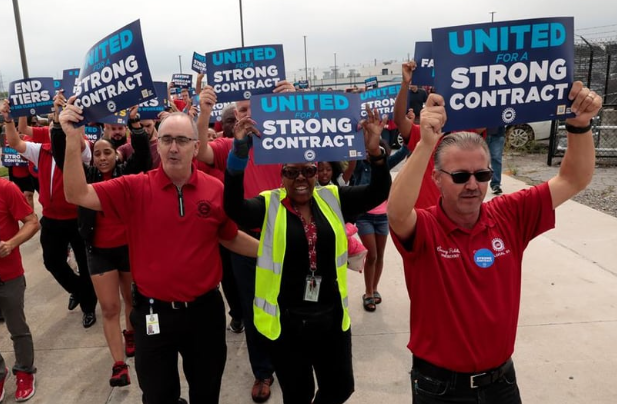Roughly 13,000 automotive industry employees, who are part of the United Auto Workers (UAW) union, initiated a strike on September 15th. This action followed extensive negotiations that failed to produce an agreement with the major automotive giants – Ford, General Motors, and Stellantis. Remarkably, this marked the inaugural occurrence in which workers simultaneously went on strike at all three of these industry leaders.
In both 2007 and 2009, the United Auto Workers (UAW) made significant concessions in an effort to stem the financial losses within the automotive sector and, optimistically, safeguard employment as companies were heading towards insolvency. As an illustration, they consented to reduced compensation and benefits for workers hired in 2007. Additionally, during the 2007 negotiations, they relinquished their cost of living adjustment (COLA).
By 2009, the newly inaugurated President, Barack Obama, was confronted with a deteriorating economy as the Great Recession took hold. This economic crisis witnessed the simultaneous collapse of banks and the housing market. Millions of Americans found themselves without work, with job losses mounting daily. Concurrently, the automotive industry teetered on the brink of collapse.
The President and Congress responded decisively, following the example set by former President George W. Bush, who had unveiled a $18 billion assistance package for the industry. Subsequently, legislators, along with President Obama, injected approximately $80 billion into the automotive companies. Now, over ten years later, the United Auto Workers (UAW) are advocating for enhancements in compensation and benefits.
UAW represents approximately 150,000 automotive workers across Ohio, Michigan, and Missouri. General Motors and Ford have recently declared their intention to lay off approximately 2,600 employees who are not participating in the strike. These layoffs are a consequence of their facilities relying on components from the striking plants to maintain operations.
The union is advocating for a 36% salary hike distributed over a four-year period. Additionally, they are seeking to eliminate some of the concessions they had previously accepted during the 2007 and 2009 negotiations. As an instance, they aim to eliminate the lower-tier wage structure that was applied to workers hired in 2007. They also wish to revert to the traditional pension scheme and retiree health benefits for these employees, who are currently only offered a 401(k) plan. Furthermore, the UAW is pressing for the reinstatement of their Cost of Living Adjustment (COLA) to ensure that their wages adjust in line with inflation.
UAW President Shawn Fain has highlighted the remarkable profits that automotive manufacturers have been reaping. He has consistently asserted that the CEOs of the Big Three companies have seen their compensation rise by 40% over the past four years, and therefore, he contends that workers should receive a similar increase.
General Motors CEO Mary Barra expressed uncertainty about the origin of the 40% figure, with The Associated Press reporting a 34% increase in her pay since 2019. Meanwhile, James Farley, Ford’s CEO, is earning 21% more than the company’s CEO in 2019, and Stellantis CEO Carlos Tavares is commanding nearly 77% more than the former CEO’s 2019 compensation. It’s worth noting that a significant portion of the remuneration for all three executives is contingent upon the performance of the company’s stock.
As of September 18, an agreement between the union and automakers has proven elusive.
